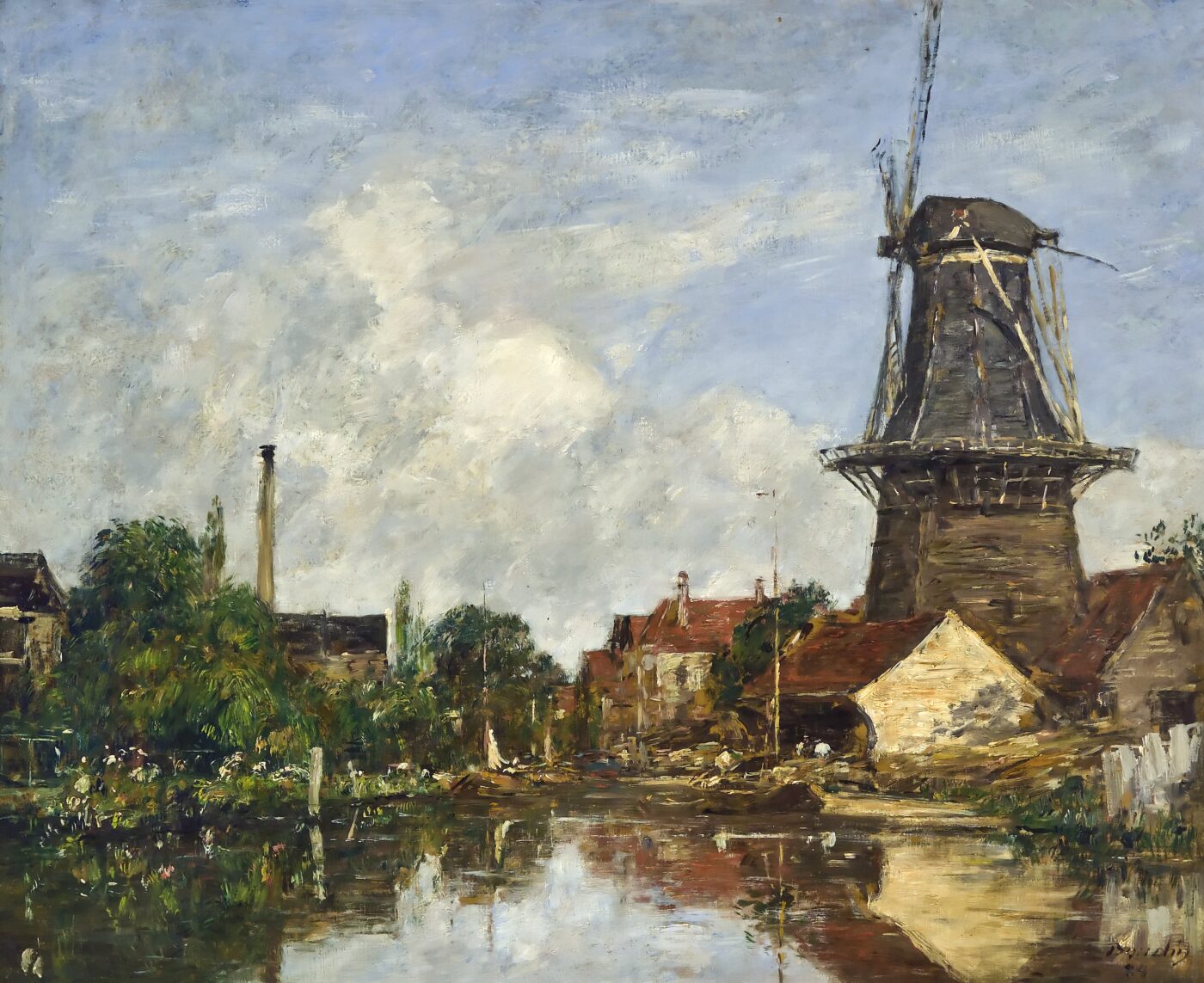New Acquisitions, Old Favourites

Eugène-Louis Boudin. French, 1824–1898. River Scene with Windmill at Dordrecht, Holland, 1884. oil on canvas. Collection of the Winnipeg Art Gallery. Gift of The Winnipeg Foundation. Bequest of Kathleen Burrows Lightcap, 2023-9.
“Adding these fan-favourite works to the permanent collection was a great project to work on together with The Winnipeg Foundation and the Gallery’s Works of Art committee,” says Nicole Fletcher, WAG-Qaumajuq Registrar.
We caught up with Fletcher and Grace Braniff, WAG-Qaumajuq Assistant Curator of Art, to discuss this acquisition further:
Can you explain what the acquisition process is at WAG-Qaumajuq?
As required by our non-profit status, WAG-Qaumajuq’s incoming collections are approved by a Works of Art Committee, which is a sub-committee of the Board of Governors and includes several external members, such as art historians and practicing artists. This committee meets three to four times a year.
At these meetings, each WAG-Qaumajuq curator proposes artworks from their areas of specialty which they think would be good additions to the collection. The curators write a justification: a short essay explaining why the artwork is important and why it would be a good fit for the Gallery. They also detail the artwork’s provenance, which is a history of the artwork’s ownership, and consider how WAG-Qaumajuq would be able to maintain the work’s storage, conservation, and care for its lifetime, particularly if the artwork is a unique size or medium.
The Gallery gets many offers for donation, so it can be difficult for the curators to research each piece that they are interested in bringing forward to the meeting. This can make the acquisition process take a long time. Typical donations take about two years from discussions with curators to finalization of tax receipting, but they can easily take longer.
After acceptance at the committee meeting, Collections Management begins processing the paperwork for the acquisition, including obtaining deeds of gift and appraisals, where necessary. Then Collections Management catalogues the works including measuring, photographing, and describing the work for our database.
This process is thorough and quite time consuming because, as custodians of visual cultural heritage for Winnipeg, we want to ensure that we have the capacity to care for these artworks and that they fit within our collecting mandate.
What are key criteria to consider when looking to acquire artwork?
As a not-for-profit institution, WAG-Qaumajuq relies heavily on the generous donation of artwork to our collection. When assessing donations for acquisition, the curatorial team considers existing representation within the collection, cultural value of the artwork, the degree to which the work and artist represents an aspect of Manitoban and Canadian culture and history, whether it embodies perspectives from underrepresented groups/histories/movements, and whether it fits our current mission, to name a few.
What is so special about the Lightcap collection? Why is it important to have these works in our collection?
The artworks within the Lightcap collection are integral to understanding the European Art Historical canon. The history these works emerge from and their associated art movements have significant impact on how we perceive and interpret art today. The legacy of works like those included in this collection are embedded in the history of colonization here in Canada.
Can you touch on the difference between these works being on long-term loan and being acquired into the permanent collection?
Although these works were long-term loans before, they still had to go through the acquisitions process to be accepted into the permanent collection. Long-term loans are a rarity at WAG-Qaumajuq. The Gallery currently has 13 long-term loans; several are very large collections, like the Government of Nunavut (GN) art collection, that we are caring for in partnership while the GN organizes their own museum, while others are comprised of one or two works that help fill small gaps in the collection.
Why do you think people are so drawn to these works?
These artworks are an entry point, for many, to WAG-Qaumajuq, from which the sensational world of local and national art can be experienced. They conform to expectations of the type of work an art gallery holds and displays. Art movements like Impressionism and European landscape painting are regularly referenced in pop culture, educational settings, and in everyday conversation.
We invite you to visit the Gallery to see the Lightcap collection on view in our permanent collection galleries, or to explore online.
More Stories
To plan your visit, check out wag.ca/visit.
